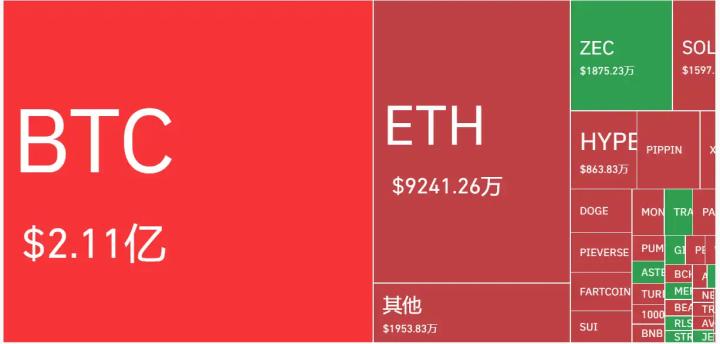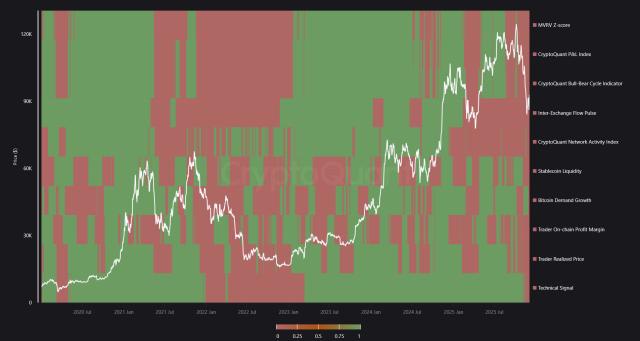Author: Scof, ChainCatcher
Editor: TB, ChainCatcher
The current state of survival of decentralized exchanges has sparked widespread discussion in the past week.
Hyperliquid was shaken by the "self-destructive arbitrage" of a 50x leveraged whale, resulting in a loss of nearly $4 million in its HLP insurance pool after accepting the liquidation order.
On the other hand, GMGN, which was once glorious during the Pump era, is also facing an undeniable predicament. According to Dune's data, the platform's revenue has plummeted from $2.34 million on January 19 to $74,000 on March 11, a drop of nearly 97%. At the same time, community feedback indicates high KOL marketing expenses, user attrition, and increased competition from CEXs, further worrying users about GMGN's future.
In this context, ChainCatcher has summarized the recent earnings of seven mainstream DEXs in this article for readers' reference.
Quick Interpretation (No Nonsense, Just Conclusions)
- Jupiter and PancakeSwap still maintain relatively high daily earnings and stable long-term performance.
- Hyperliquid leads in recent 24-hour earnings, but has seen a significant decline from its historical high.
- Raydium and Shadow Exchange have seen a significant decline in earnings, with a noticeable decrease in market activity.
- Although Aerodrome and THENA have experienced severe declines, they still have a certain profitability.
The following is a comparison of the recent 24-hour earnings and historical highest daily earnings of several mainstream DEXs:

Note: All data in the article is from Defillama, as of March 12.
Unpacking One by One, Revealing the Current Situation and Trends of Mainstream DEXs
1. Shadow Exchange
✅ Background and Positioning: A native concentrated liquidity layer and exchange deployed on Sonic, supported by the x(3,3) incentive model, aiming to provide an efficient and low-cost trading experience.
📉 Earnings Data: Historical high 864.44K, recent 24 hours 83K, down 90.30%.
📊 Market Performance: Ranked among the top ten in cryptocurrency revenue in the past 30 days, with stable user activity. The x(3,3) mechanism improves capital utilization efficiency, and the MEV protection mechanism optimizes the trading experience, bringing considerable returns to liquidity providers and traders. The Gems reward system attracts deep participation in the Sonic ecosystem, driving protocol ecosystem expansion and exhibiting continuous growth potential.
2. Raydium
✅ Background and Positioning: The leading AMM DEX in the Solana ecosystem, previously attracting a large number of users with low fees and efficient trading.
📉 Earnings Data: Historical high 3.39M, recent 24 hours only 48K, down 98.57%, with a significant decline in market activity. Its native token
📊 Market Performance: Occupied 61% of Solana DEX trading volume in Q4 2024, but its TVL is only 39% of Uniswap, indicating high trading activity but relatively insufficient liquidity. At the same time, as Raydium's trading volume is highly dependent on the support of Pump.fun, it must seek to expand into new non-meme areas in the future.
3. Jupiter
✅ Background and Positioning: The leading DEX aggregator in the Solana ecosystem, providing optimal trading path optimization, and is a core pillar of Solana DeFi trading volume.
📉 Earnings Data: Historical high 3.13M, recent 24 hours 329K, down 89.46%, but still maintains relatively high activity compared to other DEXs.
📊 Market Performance: As the DEX with the largest trading volume in the Solana ecosystem, it has high depth liquidity and cross-platform integration, with low user trading costs. However, it was recently questioned about insider trading due to the Libra incident, and the investigation results are still pending.
4. PancakeSwap
✅ Background and Positioning: The leading DEX in the BSC ecosystem, maintaining competitiveness with low Gas fees, high-speed trading, and multi-chain expansion (Ethereum, Arbitrum, Polygon, etc.).
📉 Earnings Data: Historical high 6.4M, recent 24 hours 1.11M, down 82.65%, but still maintains high profitability in the DeFi field.
📊 Market Performance: Benefiting from the active BSC ecosystem, PancakeSwap has a broad DeFi user base and is constantly expanding its product functions (such as NFT, staking, etc.).
5. Hyperliquid
✅ Background and Positioning: A decentralized derivatives trading platform in the Arbitrum ecosystem, using an active market-making mechanism, forming a differentiated competition with GMX.
📉 Earnings Data: Historical high 4.42M, recent 24 hours 1.17M, down 73.52%, but still dominates the DeFi derivatives market.
📊 Market Performance: Benefiting from the high-leverage trading that attracts traders, Hyperliquid maintains a leading position in trading volume and profitability. However, due to the impact of the whale arbitrage incident, users have doubts about its liquidity management mechanism, leading to some capital outflows in a risk-averse manner.
6. Aerodrome
✅ Background and Positioning: The core DEX in the Base ecosystem, adopting the ve(3,3) economic model to incentivize liquidity providers and optimize the trading experience.
📉 Earnings Data: Historical high 1.52M, recent 24 hours 290K, down 80.91%, with a decline in market liquidity but still maintaining a certain level of activity.
📊 Market Performance: Occupying a dominant position in the Base ecosystem, benefiting from the recent signs of recovery in the Base chain's large MC memecoin, the market performance is strong, with continuous growth in trading volume and market capitalization, and high community participation.
7. THENA
✅ Background and Positioning: One of the DEXs in the BNB ecosystem, adopting the ve(3,3) economic model, aiming to improve the sustainability of liquidity incentives.
📉 Earnings Data: Historical high 208.95K, recent 24 hours 48K, down 77.02%, although declining, it still has a certain competitiveness in the BSC ecosystem.
📊 Market Performance: A second-tier DEX in the BSC ecosystem, facing strong competition from PancakeSwap, but its ve(3,3) model can still attract some liquidity. According to the website disclosure, THENA is planning to migrate to the V3 version. This upgrade will introduce "Hooks" functionality, allowing the deployment of smart contracts on specific liquidity pools to execute specific logic during user interactions. This will provide support for advanced order types, complex applications, and customized needs, further enhancing the protocol's flexibility and functionality.
Currently, decentralized exchanges as a whole are showing a trend of declining earnings, intensified competition, and structural differentiation. The revenue of mainstream platforms has generally fallen back 70%-98% from their historical highs, with a significant impact on market activity.
Jupiter and PancakeSwap still occupy the leading positions, with relatively high daily earnings and stable long-term performance, maintaining competitiveness through ecosystem layout and user base. Hyperliquid still holds a place in the derivatives market, but the market's concerns about its risk control capabilities due to the whale arbitrage incident have impacted its liquidity. Raydium and Shadow Exchange have seen a significant contraction in earnings, with the former affected by the decline in Pump.fun trading volume, and the latter due to the overall weakening of market activity. Aerodrome and THENA still have a certain profitability, but face stronger competition from competitors in their respective ecosystems.
Looking ahead, DEXs still need to address three core issues:
- How to maintain trading activity - The market is cooling down, user trading willingness is declining, how can DEXs improve user stickiness?
- How to optimize liquidity management - Whale arbitrage, intensified competition from CEXs, how can platforms build a more stable liquidity system in the DeFi field?
- How to achieve sustainable revenue - During the bear market cycle, the high-fee model is difficult to sustain in the long run, does the DEX need a new profit model?
Facing industry challenges, the survival strategy of DEXs in the future may no longer be just competing for trading volume, but competing for liquidity, risk control mechanisms and ecosystem layout.








